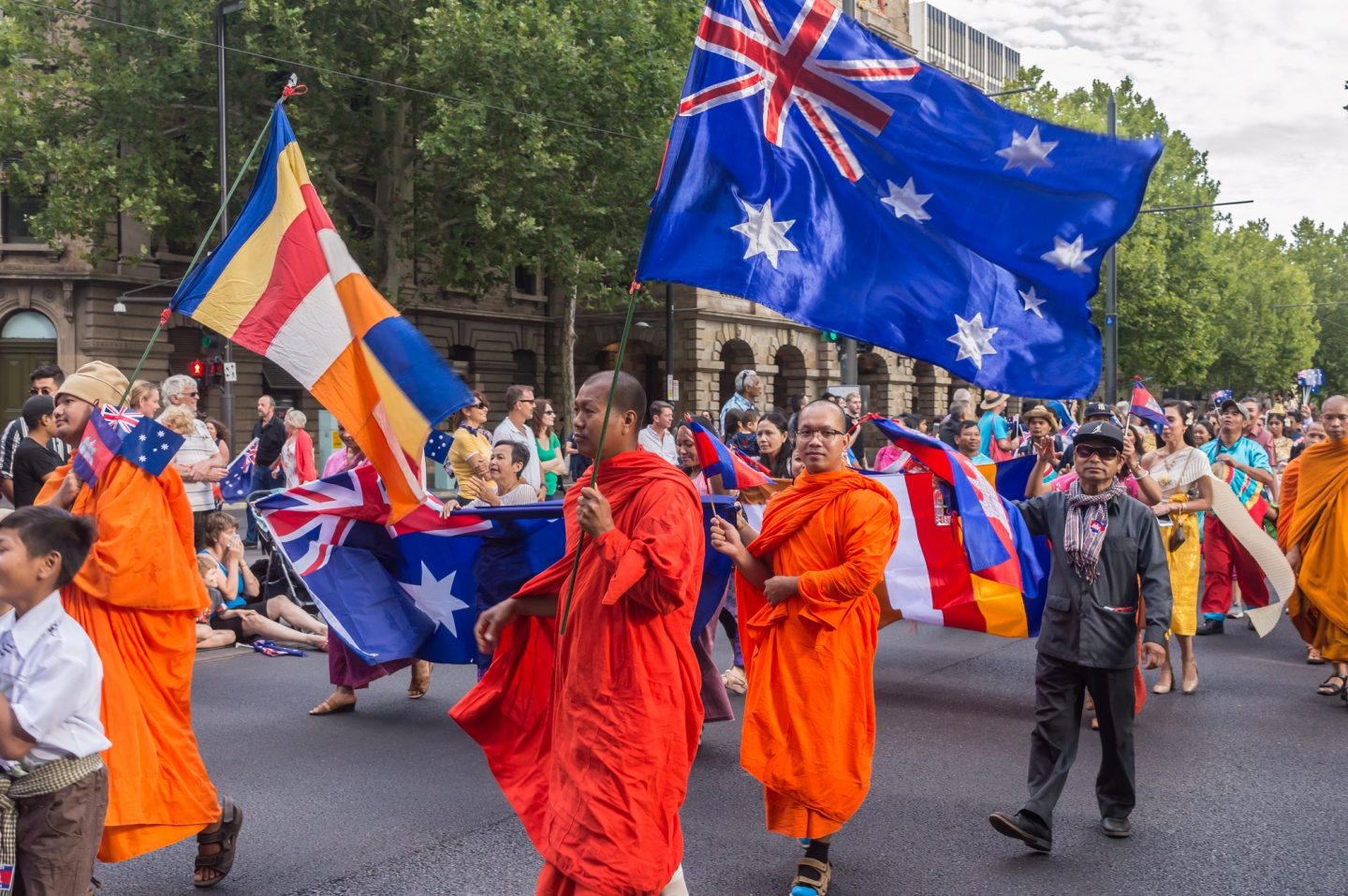Ash Whitefly
Ash Whitefly is Executive Director of the Adelaide Whitefly Institute of Diplomatic Studies.

In the street celebrations of Adelaide life, something insecure has crept into the divide between the public and the private realms.
It’s manifesting quietly behind one of our prominent annual city events, but it will not be confined to it, or to the city centre. It’s a phenomenon occurring across the globe, and it taps into a common human experience. It’s a corroding sense of doubt, fed by one of our deepest emotions – fear. In South Australia, this is particularly ironic, because Ash would like to think that our ‘She’ll be right’ attitude, so far from the globe’s geopolitical hotspots, could easily overwhelm negatives like doubt, and the efforts behind special celebrations usually ensure that doubt is the last thing on one’s mind.
Anyone who has enjoyed being in or watching a street parade comes away with a strong sense of identity with the community that celebrates it. You can’t stand in the crowd and blithely ignore the good vibe that it gives off. And if you’re a participant, you can’t but warm to the crowd support you get for being in it. A successful parade depends on a huge amount of pre-event attention to detail, many months in the planning, with organisers not only spending their own money but also asking for lots of in-kind support. One feels for the coordinators, who work thousands of hours planning, negotiating, making difficult decisions, and prioritising the most minute details of who, how, what, why and when to deliver a great parade along a road or down a boulevard. And then there’s the ultimate gamble – the weather.
Unfortunately, thanks to nutters far away, there’s now something much worse than a rainy day. It’s the very real risk of terrorism and the use of guns or heavy vehicles. It means that the organisation of a gala street parade has relatively recently become a lot more complicated – and expensive.
Adelaide’s Australia Day Parade on January 26 is a big event. More than 4000 people from more than 100 multicultural and community groups take part. About 150 community organisations are represented: vintage cars, floats, horses, marching bands.
But now there’s another challenge. The administrators call it risk, and one of its new elements is ‘traffic management’. This is how the Australia Day Council of SA sees it, as extracted from a bid for funding in mid-2019 from the city council:
“Prior to 2014 safety and security for the Australia Day in the City (ADITC) celebration was primarily focused at incidences arising from within the event itself; for example, drunken behaviour, fights, minor vehicle accidents, etc.
“This was easily managed utilising security services, minor road closures, some crowd control fencing and a barrier here and there. However, what was also occurring around the world at this time was an increasing trend for acts of terrorism utilising weapons or heavy vehicles – such as the 2016 truck attack on Bastille Day in Nice, France. Although copycat acts were yet to reach Australia, the national terrorism taskforce and local police agencies were starting to prepare contingency plans to help protect the public from such attacks. Councils also planned and implemented their requirements for security around public events with the City of Adelaide being at the forefront of this action.
“These new precautions involved such requirements as: Increased fencing and crowd control management; Increased traffic management – including more street closures and for longer periods, provision of barriers (predominantly water filled units) to reduce the risk of aggressive vehicle action and the use of the contractor’s vehicles to assist with road blockages; and Increased security to cater for larger emergencies and to ensure all the additional fencing, barriers, etc were left in situ. As terrorism methodology has evolved so has the need for increased or amended security arrangements. These changes have all been introduced as a result of recommendations from the terrorism taskforce, police agencies and, in this instance, the City of Adelaide. Most are compulsory or with very little negotiation [possible].”
The January 26 event’s costs for fencing, crowd management and security have been roughly the same over the past six years, but the cost for traffic management has more than doubled. The average cost during 2015 and 2016 was about $6000, but in 2018 it jumped to $14,941, and last year (January 2019) it jumped to $17,281. It’s unlikely to be any less in January 2020.
It’s a small but telling symbol of the risky world South Australians now live in. That this new risk isn’t likely to be comprehended by the thousands who line King William Street on the big day says something about the increasing divide between the low-level risk that the community perceives, and the very real risk that the police and security advisors are now accepting has become part of our naïve pursuit of public celebration in a country whose anthem still boasts that we remain not only young – but also free.
Ash Whitefly is Executive Director of the Adelaide Whitefly Institute of Diplomatic Studies.